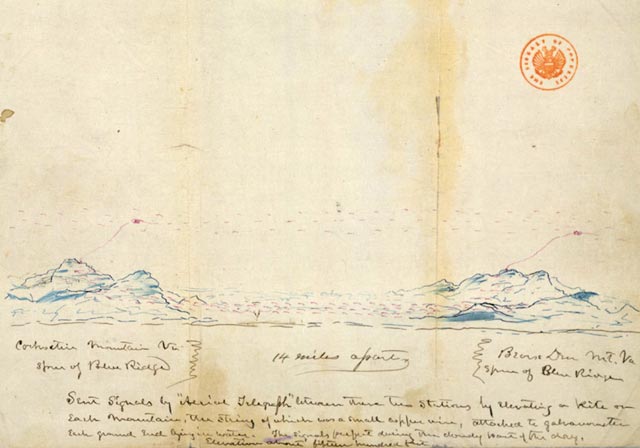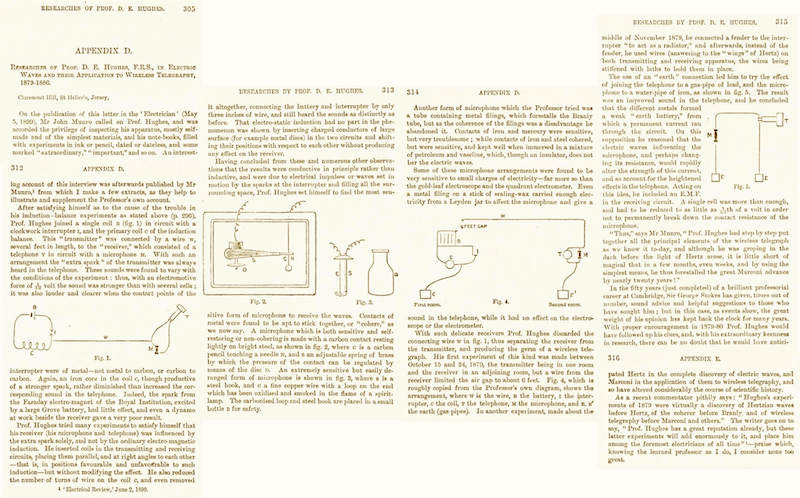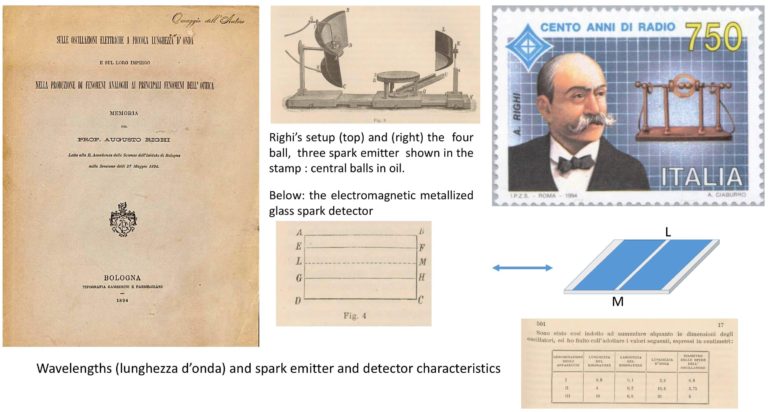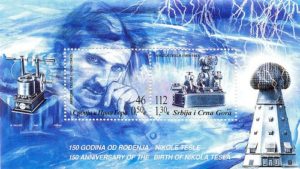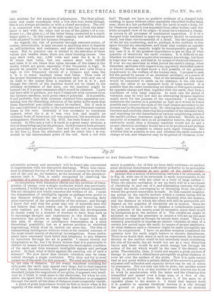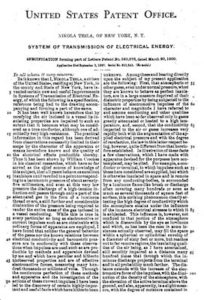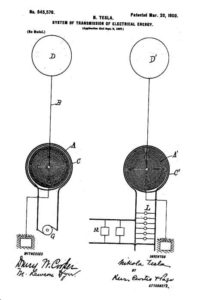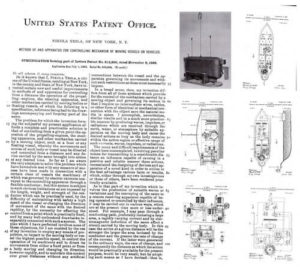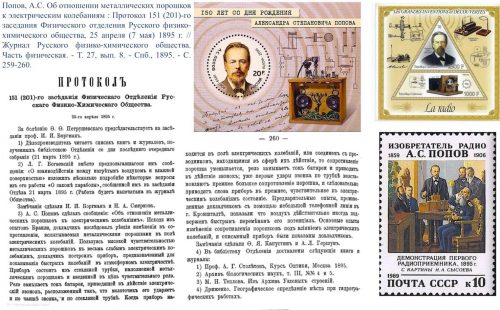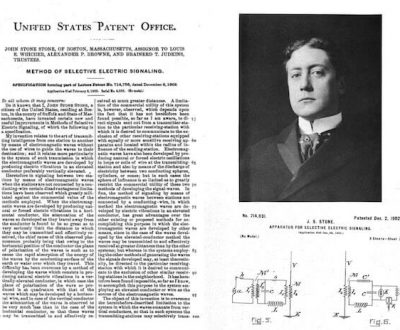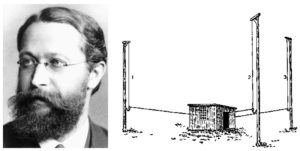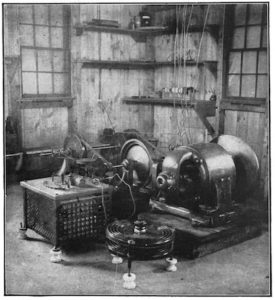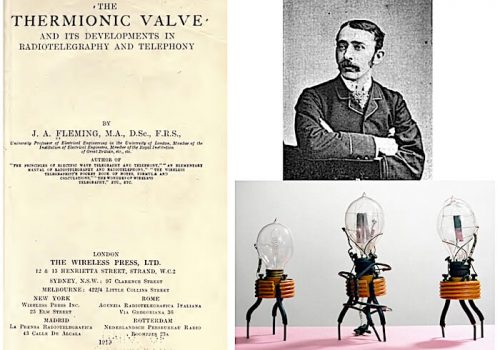Wireless Communications and the Radio.
November 2019. by Vladimir Esaulov.
Within a few years of the functioning of wire telegraphy there arose an interest in wireless communication, especially in situations where no wiring was possible, as for instance for communication with ships. Various ideas appeared, on how to transmit signals through water or the earth as the conductor or even through air assuming, that existence of atmospheric electricity meant that there existed a conductive layer in the atmosphere and that the earth could serve as a return path. They frequently required extremely large scale and expensive installations to be competitive with wire telegraphy and telephony. So, who invented the radio? Just one person or many?
In the following we explore the history of wireless communications and the radio. We mention some of the accidental findings, not understood at the time, which were however significant. Fundamental discoveries and studies of physical phenomena, crucial inventions and the many incremental improvements that transformed laboratory results into a global communication system are then described.
Electromagnetism and Charles Maxwell. Maxwell’s work on electromagnetism formulated around 1865, opened up a new era in communications. However it first needed testing. An experimental proof of Maxwell’s theory concerning electromagnetic waves was provided two decades later by the elegantly simple experiments of the German physicist Heinrich Rudolf Hertz (1857-1894) and others. These experiments paved the way to the development of wireless telegraphy by Aleksandr Popov in Russia, Giovanni Marconi in Italy and a number of others. Hertz’s experiments were the first detailed study on the emission, propagation and reception of radio waves. Hertz himself did not see much more than a heuristic interest in them.
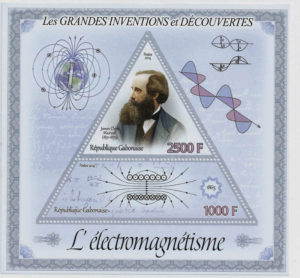

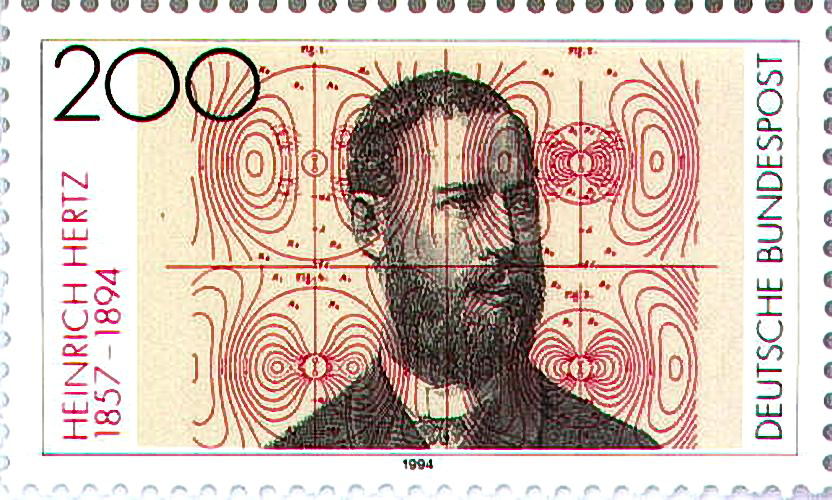
THE PIONEERS
It must be said that before the systematic study of Hertz two experimenters produced and detected electromagnetic waves, without an understanding of the underlying phenomena (see e.g. ref.1). We first look at these two cases.
Mahlon Loomis(1826-1886). The first patented demonstration of electromagnetic emission and detection is due to an experiment by Mahlon Loomis (U.S. Patent 129,971- “Improvement in Telegraphing”, issued in July 1872). Actually a patent claiming construction of towers for “Improvement in Collecting Electricity for Telegraphing” was issued a short time earlier to William Henry Ward ( U.S. Patent 126,356). In both cases the premise upon which the experimenters based their research had nothing to do with electromagnetic waves.
Loomis, who was interested in using atmospheric electricity, flew two kites, each with a small copper wire gauze attached to the kite and a trailing a metal wire attached to ground through a a galvanometer. The kites were separated by a few miles. One of the kites wires was deliberately disconnected from the galvanometer. The free kites (unconnected to the galvanometer) picked up static electricity in the atmosphere. Shorting the wire of the kite to its base galvanometer, created a noticeable effect in the galvanometer at the base of the second kite. This experiment was performed repeatedly in a concerted manner, as noted in Loomis’ notebook: “it was arranged that at precisely such an hour and minute the galvanometer at one station should be attached, to be in circuit with the ground and kite wires. At the opposite station the ground wire, being already fast to the galvanometer, three separate and deliberate half-minute connections were made with the kite wire and the instrument. This deflected or moved the needle at the other station with the same vigor and precision as if it had been attached to an ordinary battery. After a lapse of five minutes, as previously arranged, the same performance was repeated with the same results until the third time.” Some other experiments were performed, but Loomis was not successful in obtaining support to develop his work.
David Edward Hughes (1831-1900). In 1879 the British-American inventor David Hughes while experimenting (ref. 2-4) with an induction balance (ref.5) and a special carbon microphone accidentally observed emission of electromagnetic waves because of sparks in the circuit (see description of Hertz’s experiment below). The waves, about which Hughes had no idea, were detected by his carbon microphone, which behaved like a receiver. This microphone acted like electromagnetic wave detectors developed more than a decade later. Hughes performed a number of experiments involving a simple circuit with a clock interrupter (which sparked) and a receiver circuit with a microphone placed in an adjacent room (see diagrams and description in the image below from J.J. Fahie’s text (ref.3, 4)). In doing these experiments he discovered that a simple wire antenna connected to earth in the transmitting circuit greatly improved the reception. He was able to hear his transmitter while walking away from his house to a distance of upto about 400 meters. The phenomenon was not understood and during Hughes’ demonstration, dismissed as an effect of induction by several well known scientists of the day: the president and secretaries of the Royal Society. This unsupportive attitude abruptly ended Hughes’ research into this topic and he never published his findings. They are described in his notebooks, now in the British Library (MSS 40161-63, 40641-48). A version of Hughes’ apparatus was discovered much later in London (see image from Popular Science). These objects (shown in the lower part of the figure) are on display in the Science Museum (London). Below on the right is the clockwork-powered interruptor that Hughes devised to give an automatic series of interruptions of the circuit while he moved around his house and the street outside with his detecting apparatus. In the middle the carbon microphone. On the bottom left a three-nail “very sensitive” microphone tested by Hughes.
Heinrich Hertz. The success of Hertz’s experiments, conducted some years later, owed much not only to his ability as an experimental physicist, but to his understanding of electromagnetism. Indeed Hertz had arrived at his own independent formulation of the theory of electromagnetism (Hertz 1884, 1889) leading to Maxwell’s equations. A nice description of these experiments can be found in his 1893 book “Electric Waves” (ref 6). Further information on his laboratory and his apparatus can be found in the paper of John Bryant (ref.7), which is a quest to reproduce them and analyse the difficulties Hertz encountered. Hertz’s own diagrams are very schematic (see figure and photographs). Hertz’s first experiment, conducted between 1886 and 1889, consisted in the use of a transmitter in which the electromagnetic waves were produced using a dipole oscillator and antenna consisting of two large spheres connected by thick wires with a small spark gap between them. The oscillator was charged by an induction coil, until a point when the voltage in the gap was high enough to generate a breakdown in the gap, generating oscillating currents in the circuit (standing waves with a frequency of about 50 MHz (megahertz). The unit of frequency is named hertz in honour of Hertz, as is also the term Hertzian waves. Hertz used a simple wire loop as the receiver. The loop incorporated an adjustable small gap, across which sparks were observed when charge oscillations were excited by the captured electromagnetic wave. Hertz was able to conclude that his observations were not due to induced currents and confirmed obserevation of electromagnetic waves. He also realised the importance of adjusting the size of the receiving loop to optimise observation of sparks in the detector, i.e. tuning the receiver to the emitter wavelength, and reported resonance curves. Using variants of the setup, he performed studies of the frequency and wavelength of the emitted waves, the velocity of propagation, investigated polarisation, reflection and refraction establishing the similarity with light and demonstrating that his invisible waves and light were both forms of electromagnetic radiation. He also investigated propagation of waves in wires.
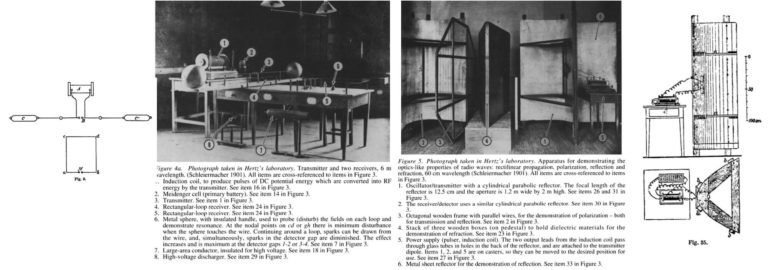
Oliver Joseph Lodge (1851 – 1940). While Hertz’s was the first very thorough study in the field, Oliver Lodge, had also, in parallel, produced and detected electromagnetic waves (ref.9-13). In some cases, as with Hughes, this was a by product of other studies: Lodge was experimenting on protection of buildings from lightnings. The development of successful wireless telegraphy and the radio required development of efficient techniques for generating radio waves and their detection. Lodge greatly improved the means of detecting Hertzian waves by introducing a device he called the “coherer”. This was earlier developed partly by the Frenchman Edourd Branly (1844-1940). It consisted in a tube with electrodes, between which were located metal filings, whose resistance decreased in presence of radio waves and thus acted as an “on” switch upon reception of a radio signal. The word “coherer” comes from cohesion, since the metal particles were seen to stick to each other after the passage of the electric perturbation. The “off” switch position (or reseting) had to be induced by mechanical shaking of the tube, by a special “decoherer” device. Lodge later added a “trembler”, a device that shook the filings loose between waves. Lodge actually experimented with different types of coherers including a two spherical knob and also a spiral point contact coherer. Some of these are shown in the figure below. It is interesting to note here that Hughes’ carbon microphone detecter did not require resetting. Lodge demonstrated his device at the Royal Institute in 1894. On August 16, 1898 he received U.S. Patent No. 609,154. The patent showed an adjustable induction coil used in the antenna circuit of the wireless transmitter and also in the receiver. This made it possible to tune the transmitter and receiver with each other on the same frequency. This would later be part of a legal dispute with Marconi, settled in favour of Lodge (Marconi finally bought Lodge’s patent). Lodge used different types of emitters, including not only a two sphere spark gap but also several sphere emitters (see image and ref.11) and emitters enclosed in metal enclosures. Some of these emitters allowed production of quite short wavelength waves, like the multi-sphere one illustrated in the figure and described in 1890, which resulted in waves of only 17 cm. This short wavelength range was explored in much detail later by others (see below).
The 1894 Hertz Memorial Lecture by O.Lodge. On June 1, 1894, Lodge delivered a historic memorial lecture and demonstrations “On the Work Of Hertz” at the Royal Institution in London. The lecture was initially reprinted in 1894 in pamphlet form in The Electrician with its original title “On the Work Of Hertz”. It was subsequently republished in four editions beginning in 1896 as “Signalling Across Space Without Wires: Being a Description of the Work of Hertz And His Successors”. The later editions discuss the work of Hughes and the first works in wireless telegraphy. Lodge’s 1894 lecture was the first time Hertzian wave experiments were publicly demonstrated. Lodge demonstrated the refraction, reflection and polarization of electric waves, and their passage through stone walls from room to room. These experiments, with some variations, were repeated on August 1, 1894 at meetings of the British Association in Oxford. It is said (ref.12), but this is subject to controversy (ref.13), that Lodge demonstrated telegraphy during the August lecture. Lodge acknowledges however not having thought of wireless telegraphy applications initially (ref. 10, p 45): “The idea of replacing a galvanometer, which was preferably a well- damped or speaking galvanometer, by a relay working an ordinary sounder or Morse was an obvious one, but so far as the present author was concerned he did not realise that there would be any particular practical advantage in thus with difficulty telegraphing across space instead of with ease by the highly developed and simple telegraphic and telephonic methods rendered possible by the use of a connecting wire. In this non-perception of the practical uses of wireless telegraphy he undoubtedly erred. But others were not so blind, though equally busy ; and notably Dr. Alexander Muirhead foresaw the telegraphic importance of this method of signalling immediately after hearing the author’s lecture on June 1st, 1894, and arranged a siphon recorder for the purpose.” A siphon recorder was a recorded developed by Muirhead to record telegraphic messages in Morse code on a paper ribbon. Lodge’s lecture influenced others and led them to work in this field.
Augusto Righi (1850-1920). Righi was an Italian physicist and professor of Physics in Bologna, who worked on various aspects of electromagnetism. He also investigated the photoelectric effect, a term coined by him. Righi continued Hertz’s experiments extending them to shorter wavelengths in the 20 to 2,6 cm range (see table in the figure above) as described in his 1894 book (ref.15). His apparatus is shown in the figure above. He used a modified Lodge four sphere spark system, with the two central spheres kept in vaseline oil to keep them clean. Instead of a metal filing coherer he developed a glass plate detector, which he wrote was more sensitive. This was a metal coated glass plate (a piece of mirror) in which a two rectangular metal coated areas were retained separated by a narrow gap as illustrated in the figure. Interestingly both the transmitter and receiver were equipped with parabolic antennas. The dimensions of the various parts of the transmitter and receiver were adjusted for specific wavelengths as indicated in the table in figure. Righi performed numerous measurements on reflection, refraction and diffraction. He reports transmitting and receiving the radio waves over a distance of 20 meters. Guglielmo Marconi was Righi’s student from 1892 to 1895 and frequented his laboratory.
Jagadish Chandra Bose (1858-1937). The Indian Physicist Jagadish Bose’s interest in electromagnetic waves was triggered by O.Lodge’s 1894 lecture “The Work of Hertz and his Successors”. Bose focussed on short millimeter to centimeter wavelength radiation with frequencies in the gigahertz range. This allowed him to perform more accurate measurements than Hertz who used very large wavelengths and hence required a large scale apparatus. In practice Bose redesigned everything. His final remarkable apparatus became portable (ref.16). He designed a special small emitter following Lodge’s three ball spark system, using platinum plated balls. For his receiver, instead of using the not very reliable Branly type coherer used by Lodge and others, he invented several detectors, starting from one in which metal finings were replace by small metal springs. The surface of these was slightly oxidised and he showed that they did not obey Ohm’s law and had what today is recognised as semiconductor characteristics. Bose later was awarded the world’s first patent for a semiconductor. In some cases he used point-contact junctions (figure above) in his receiver, which by the way resemble much Hughes’ detector. He also used a metal-mercury-metal detector (see figure and ref.17), later used (and even patented!!) by Marconi, inspite of the fact that this work was well known earlier and presented publicly (ref.17). This misappropriation was only recently recognised by the IEEE society (ref.18).
Bose invented and used waveguides, horn antennas, dielectric lenses, various polarisers. Much of his original equipment may be seen at the Bose Institute (Kolkata, India): an institution which he founded partly using his own finances. Like Hertz and Lodge, Bose was interested in pure Physics and did not generally seek patents leaving his research available for use by others. Most of his work was aimed at determining the characteristic of electromagnetic wave propagation. However he did also perform experiments demonstrating distant communication sending and receiving signals: during a public lecture in Kolkata in 1895. The emitter and receiver were placed in different rooms 75 feet apart and separated by two walls. To achieve this he connected the emitter and receiver to antennae: metal discs mounted on 20 foot poles (ref.19). His project to communicate from his house to the Presidency College a mile away was never implemented.
WIRELESS COMMUNICATIONS BEGIN.
Most of the experimenters studying emission and reception of electromagnetic waves mentioned above, were interested in fundamental physics. Their interests lay in the study of the characteristics of propagation of hertzian waves over a wide spectrum of frequencies and while of course they demonstrated how they could be produced and detected. They were not concerned or did not see an advantage in using them to replace the extensively used wire telegraph and telephone systems supported by powerful companies. It is not that such ideas were not expressed. In November 1891, the then president of the Institute of Electrical Engineers, physicist and chemist, Sir William Crookes referred to experiments of Hertz, Lodge and probably Hughes, and spoke of the “bewildering possibility of telegraphy without wires, posts, cables, or any of our present costly appliances”. However this did not arouse great interest at the time, and was only remembered when radio communications started. You will find below a part from that visionary talk published in 1892 (ref.).
From “SOME POSSIBILITIES OF ELECTRICITY”, by W. Crookes lecture. Whether vibrations of the ether, longer than those which affect us as light, may not be constantly at work around us, we have, until lately, never seriously inquired. But the researches of Lodge in England and of Hertz in Germany give us an almost infinite range of ethereal vibrations or electrical rays, from wave-lengths of thousands of miles down to a few feet. Here is unfolded to us a new and astonishing world–one which it is hard to conceive should contain no possibilities of transmitting and receiving intelligence.
Rays of light will not pierce through a wall, nor, as we know only too well, through a London fog. But the electrical vibrations of a yard or more in wave-length of which I have spoken will easily pierce such mediums, which to them will be transparent. Here, then, is revealed the bewildering possibility of telegraphy without wires, posts, cables, or any of our present costly appliances. Granted a few reasonable postulates, the whole thing comes well within the realms of possible fulfilment. At the present time experimentalists are able to generate electrical waves of any desired wave-length from a few feet upwards, and to keep up a succession of such waves radiating into space in all directions. Possible, too, with some of these rays, if not with all, to refract them through suitably-shaped bodies acting as lenses, and so direct a sheaf of rays in any given direction ; enormous lens-shaped masses of pitch and similar bodies have been used for this purpose. Also an experimentalist at a distance can receive some, if not all, of these rays on a properly-constituted instrument, and by concerted signals messages in the Morse code can thus pass from one operator to another. What, therefore, remains to be discovered is–firstly, simpler and more certain means of generating electrical rays of any desired wave-length, from the shortest, say of a few feet in length, which will easily pass through buildings and fogs, to those long waves whose lengths are measured by tens, hundreds, and thousands of miles; secondly, more delicate receivers which will respond to wave-lengths between certain defined limits and be silent to all others; thirdly, means of darting the sheaf of rays in any desired direction, whether by lenses or reflectors, by the help of which the sensitiveness of the receiver (apparently the most difficult of the problems to be solved) would not need to be so delicate as when the rays to be picked up are simply radiating into space in all directions, and fading away according to the law of inverse squares.
Any two friends living within the radius of sensibility of their receiving instruments, having first decided on their special wave length and attuned their respective instruments to mutual receptivity, could thus communicate as long and as often as they pleased by timing the impulses to produce long and short intervals on the ordinary Morse code. At first sight an objection to this plan would be its want of secrecy. Assuming that the correspondents were a mile apart the transmitter would send out the waves in all directions, filling a sphere a mile in radius, and it would therefore be possible for any one living within a mile of the sender to receive the communication. This could be got over in two ways. If the exact position of both sending and receiving instruments were accurately known, the rays could be concentrated with more or less exactness on the receiver. If, however, the sender and receiver were moving about, so that the lens device could not be adopted, the correspondents must attune their instruments to a definite wavelength, say, for example, 50 yards. I assume here that the progress of discovery would give instruments capable of adjustment by turning a screw or altering the length of a wire, so as to become receptive of wavelengths of any preconcerted length. Thus, when adjusted to 50 yards, the transmitter might emit, and the receiver respond to, rays varying between 45 and 55 yards, and be silent to all others. Considering that there would be the whole range of waves to choose from, varying from a few feet to several thousand miles, there would be sufficient secrecy ; for curiosity the most inveterate would surely recoil from the task of passing in review all the millions of possible wave-lengths on the remote chance of ultimately hitting on the particular wave-length employed by his friends whose correspondence he wished to tap. By “coding” the message even this remote chance of surreptitious straying could be obviated.
This is no mere dream of a visionary philosopher. All the requisites needed to bring it within the grasp of daily life are well within the possibilities of discovery, and are so reasonable and so clearly in the path of researches which are now being actively prosecuted in every capital of Europe that we may any day expect to hear that they have emerged from the realms of speculation into those of sober fact. Even now, indeed, telegraphing without wires is possible within a restricted radius of a few hundred yards, and some years ago I assisted at experiments where messages were transmitted from one part of a house to another without an intervening wire by almost the identical means here described.
Once Hertz’s results became known, especially following Lodge’s presentation, and it was amply clear that there now existed a new possibility to send and receive signals, several scientists and home-brew inventors set out to investigate the demonstrated emission and reception of “radio” waves” further, with a direct view of putting these discoveries to practical use: developing wireless telegraphy, detection of lightning or power transmission. This would take a number of years devoted to first rendering the existing systems more reliable and improving the distance of transmission and later developing new technologies for detecting, amplifying and transporting (audio) signals.
Nikola Tesla (1856 –1943) was a Serbian-American inventor and electrical engineer, who is well known for his pioneering contributions to the design of the modern alternating current electricity supply system. Tesla was particularly interested in wireless transmission of energy over distance. In the early 1890s, Tesla experimented with transmitting power by inductive and capacitive coupling using high AC voltages generated with his famous Tesla coil and conducted a series of demonstrations where he lit Geissler tubes and even incandescent light bulbs from small distances. Tesla had stressed the necessity of using tuned circuits in resonance. In 1893, in a frequently quoted lecture “On Light and Other High Frequency Phenomena”, he spoke of the possibility of wireless communication.
“…. I would say a few words on a subject which constantly fills my thoughts and which concerns the welfare of all. I mean the transmission of intelligible signals or perhaps even power to any distance without the use of wires. I am becoming daily more convinced of the practicability of the scheme; and though I know full well that the great majority of scientific men will not believe that such results can be practically and immediately realized, yet I think that all consider the developments in recent years by a number of workers to have been such as to encourage thought and experiment in this direction. My conviction has grown so strong, that I no longer look upon this plan of energy or intelligence transmission as a mere theoretical possibility, but as a serious problem in electrical engineering, which must be carried out some day. The idea of transmitting intelligence without wires is the natural outcome of the most recent results of electrical investigations.”
He presented a very schematic diagram of such a system shown below in the text published in the 1893 Electrical Engineer. This lecture is cited (ref.20) as one where he demonstrated wireless communication. There is however nothing there to indicate this actually happened and Tesla’s own words do not indicate this. Later in this lecture text it appears (see box in the figure below) that his ideas involved transmission through the earth or through, what he thought was possible, the earth’s atmosphere but without reference to Hertzian electromagnetic waves. Tesla did not accept the Hertzian point of view and believed that if waves existed, they were longtitudonal and not transverse.
Tesla continued to work on wireless transmission in the following years. In 1895 he suffered a serious setback when his New York laboratory burned down. In 1897 he applied for a patent for transmission of electrical energy via the rarefied strata of the earth’s atmosphere using a four circuit system, such that on both transmitter and receiver there was a coupled two coil system connected to ground and an elevated terminal (a balloon) (US patents 654 576 and 649 621, see image below). He underlines tuning: “the feature of a transmitting and receiving coil or conductor, both connected to the ground and to an elevated terminal and adjusted so as to vibrate in synchronism….“. He also mentioned that ” … the principles which I have herein disclosed and the apparatus that I have shown will obviously have many other valuable uses -as, for instance, when it is desirable to transmit intelligible messages to great distances, or to illuminate …“. Modifications of his system incorporating extra elements for tuning were later developed by Lodge and Stone Stone and used by Marconi for wireless telegraphy.
In 1898 Tesla conducted his famous experiment on controlling a small robotic boat in a demonstration in Madison Square Garden in New York. For this he was granted the US patent 613 809. In 1901, in the hope of beating Marconi to be the first to transmit radio signals over the Atlantic, Tesla embarked on a project to build a huge transmitting station, the Wardenclyffe tower (see image on the Tesla stamp) in Shoreham, New York, with intial support from J. Pierpont Morgan. The project was not completed.
Aleksandr Stepanovitch Popov (1859-1906).The Russian Physicist Popov, was a professor at the Russian Navy School in Kronstadt, near Saint Petersburg, since the early 1880’s. This made him interested in naval communications (very difficult at the time) and weather prediction. He started off by trying to develop a device to detect distant thunderstorms. In his work he was inspired by Oliver Lodge’s lecture demonstration on Hertzian waves in 1894 in which he used a coherer. Popov then worked on a radio, or rather an electrical disturbance receiver, with his own version of a coherer and an automatic decoherer. Popov also pioneered the use of a receiver equipped with a monopole antenna : a long wire connected to the coherer and an earth ground. This was deployed in 1895 in St.Peterburg and Popov was able to detect lightning some 50 km away. He described his radio receiver in the Russian Physical Chemical Society Journal in May 1895 (ref. 21). That year he also wrote in this journal: “I can express my hope that my apparatus will be applied for signalling on great distances by electric vibrations of high frequency, as soon as there will be invented a more powerful generator of such vibrations.” In 1896 he demonstrated radio message transmission between buildings in St. Petersburg (ref.22). Popov abandoned this project and returned to it later once Marconi had patented and publicised his invention. Popov’s version of radio transmission and reception was used by the Russian navy to communicate with ships, starting from 1897. In 1900, Popov’s wireless apparatus was used in saving the crew of the battleship General-Admiral Apraksin. Popov’s radio system enabled them to stay in contact with the headquarters in Kronstadt untill the rescue operations could take place with the help of the icebreaker Yermak.
Giovanni Marconi (1874-1937). Wireless Telegraphy Becomes a Reality. The Italian inventor Giovanni Marconi stated tinkering with Hertz’s system in the attic of his home, with the idea of making a wireless communication system. Marconi had studied physics at home and then with Augusto Righi and so was introduced to the experiments on emission and reception of hertzian waves. Marconi did not publish anything until his patent submission in 1896, and so the timing of his work comes from his own statements and comments of others, sometimes many years later (ref. 24).
He first built a spark gap transmitter equipped with a telegraph key and a receiver with a coherer following the Hertz and Lodge design. The first test transmission and reception appears to have been made at home in December 1894. He also worked on an improved coherer design using a mix of iron and zinc filings in some cases adding some mercury and placing them in vacuum. While trying to improve on the transmission distance around September 1985, he stumbled upon the idea of a suspended monopole plate antenna (see image and his comments to his friend and collaborator Luigi Solari) with one grounded end to improve transmission and used the same antenna on the receiving end. The plate antenna was later replaced by a wire. Marconi’s system did not find support in Italy and he was obliged to move to England where he demonstrated his wireless telegraphy in 1896 by sending signals between two Post Office buildings. He gained support of William Preece, the Chief Electrical Engineer of the British Post Office.
In 1897, Marconi started wireless communication over open sea, over a distance of 6 km. He founded Wireless Telegraph & Signal Company, later known as the Marconi Company. He filed his first patent for his emitter receiver design in 1896 in England and in the US, which were accepted in 1897.Marconi’s transmission distance improved rapidly with time. In 1899 he transmitted 50 kilometers across the British Channel from Dover to Wimereux, then 175 kilometers from Antibes to Calvi, on the island of Corsica, in April 1901.
By 1901, Marconi, had enlisted the help of technically more experienced people in particular John Ambrose Fleming a British electrical engineer, who helped significantly in the first transatlantic emissions. In 1904 Fleming devised the first prototype thermionic valve, which Marconi decided to produce and use as a new electromagnetic detector.
Returning to wireless transmissions, in December 1901, Marconi claims to have sent and received the first wireless message across the Atlantic Ocean, from Cornwall to Newfoundland, Canada. This went against the prevailing belief that the curvature of the Earth would affect transmission as the radio waves should, like light travel in straight lines. The fact that they in practice could, was later explained to be due to reflection or refraction of radio waves by the ionosphere a mode of propagation referred to as skywave. Concerning Marconi’s experiment, given the wavelength used (estimated to be in the 300-400 meter range) and day time transmission, a combination that would impede skywaves, it is thought that he only detected noise or harmonic signals. He continued undeterred to experiment to stretch the range of transmission. In December 1902, he succeeded in sending the first radio message to cross the Atlantic from the Marconi station in Nova Scotia, Canada.
Marconi began to build high-powered stations on both sides of the Atlantic to communicate with ships at sea. In 1904, he established a commercial service to transmit nightly news summaries to subscribing ships, which could incorporate them into their on-board newspapers. A regular transatlantic radio-telegraph service was finally begun in October 1907 between Clifden, Ireland and Glace Bay. Marconi got great acclaim when his wireless system was used by the crew of the sinking RMS Titanic to call for assistance in 1912.
A look at the early Marconi patent text reveals that he uses designs of Hertz, Lodge, Bose and a number from his mentor Righi, which had not been patented. Marcni’s own main claim was on a number of significant “improvements” in mounting and assembling parts. Later the Marconi company violated earlier patents on four circuit tuned emitter-receiver circuits of Tesla, Lodge and Stone Stone, that were crucial to the operation of wavelength selective radio emissions.
Whatever one may think of this and later patent suits (see below) one can not deny that it was the young Marconi’s belief in the usefulness of wireless telegraphy (and his business acumen) that progressively led to the transformation of the laboratory experiments on electromagnetic wave emission and reception into a functioning global wireless system. Marconi shared the Nobel Prize in Physics with Karl Braun in 1909, in recognition of their contributions to the development of wireless telegraphy.
One can sometimes see generic mentions that a 1943 US Supreme Court ruling invalidated Marconi’s patent for the radio. The court case filed by Marconi company against the US :Marconi Wireless Tel. Co. v. United States – 320 U.S. 1 – did not concern the original 1897 patent but in particular the patent no. 763772 for a “four circuit” wireless telegraphy radio communication system, which was previously contested by Oliver Lodge, Nikola Tesla, and John Stone Stone as violating their prior patent rights, and which became the focus of a long lasting litigation. The patent had been filed by Marconi in 1900, some months after the one filed by Stone and had been granted in 1904. Marconi sued the U.S. government for patent infringement in the U.S. Court of Claims. The Supreme Court case resulted from appeals of both the government and Marconi Wireless of decisions from the Court of Claims.
The court examined carefully the background of the development Marconi’s “four circuit” system with special attention to the very detailed and carefully explained tuned circuits patent of Stone Stone and ruled that :“Marconi’s reputation as the man who first achieved successful radio transmission rests on his original patent, which became reissue No. 11,913, and which is not here [320 U.S. 1, 38] in question. That reputation, however well-deserved, does not entitle him to a patent for every later improvement which he claims in the radio field. Patent cases, like others, must be decided not by weighing the reputations of the litigations, but by careful study of the merits of their respective contentions and proofs. As the result of such a study we are forced to conclude, without undertaking to determine whether Stone’s patent involved invention, that the Court of Claims was right in deciding that Stone anticipated Marconi, and that Marconi’s patent did not disclose invention over Stone. Hence the judgment below holding invalid the broad claims of the Marconi patent must be affirmed. In view of our interpretation of the Stone application and patent we need not consider the correctness of the court’s conclusion that even if Stone’s disclosures should be read as failing to direct that the antenna circuits be made resonant to a particular frequency, Marconi’s patent involved no invention over Lodge, Tesla, and Stone“.
Thus the ruling has nothing to do with Marconi’s original patent. It does consider Marconi’s tuned four circuit system as invalid, but does not attribute this innovation to any single individual as this is sometimes implied.
John Stone Stone (1869 –1943) was an American mathematician, physicist and inventor. Stone started working in the R&D of Bell Telephone. Part of his work involved investigation of electrical resonance. 1892, he attempted unsuccessfully to wirelessly transmit audio using “high frequency transmissions”. His work on resonant circuits on telephone lines, led him to improve radio transmitter and receiver designs. Stone developed an adjustable “selective four-circuit tuning” improving on Tesla’s basic design, to help insure that the transmitter and receiver were operating on a single common frequency. In 1900, he applied for U.S. patents for his tuning work that were issued in 1901 and 1902 (US Patents 714832, 716836, 714756).
In 1902 the Stone Telegraph and Telephone Company was founded and started operating the first commercial radiotelegraph link was between the Isle of Shoals and Portsmouth, New Hampshire. The company ceased operation in 1908.
Others in Wireless Telegraphy. German Efforts and Karl Ferdinand Braun. The first experiments of Marconi on wireless telegraphy did not go unnoticed and were taken up by the British Navy and the German establishment (refs. 26, 27). There was an initial collaboration started in 1896 between the British Navy and Marconi following which Captain Henry Bradwardine Jackson conducted experiments on telegraphy and established wireless links between ships over a few miles in 1897 (ref 27). Some of the early equipment of Jackson may be seen in the Saltash Heritage Collection. The Navy continued experiments but Marconi’s systems covered a longer range.
Germany too had an industrial and military interest in developing wireless communications (ref 26.). Three groups of scientists and engineers in Germany started working on wireless telegraphy and developed their own wireless telegraphy systems. These included teams of Adolf Slaby (1849–1913), professor at the Technical College Charlottenburg (today Technical University Berlin), Karl Ferdinand Braun (1850–1918), professor of experimental physics at the University of Strasbourg, and the physicist Adolf Koepsel (1856–1933) for Siemens & Halske, a large manufacturer of communication technologies in Germany.
Adolf Slaby, observed Marconi’s tests in 1897 and then started by reproducing them in Germany. During 1898-1899, Slaby filed five patents, which protected his telegraphing system developed in cooperation with “Allgemeine Elektricitäts Gesellschaft” (A.E.G.) and with support from the German navy.
In Strasbourg, Karl Ferdinand Braun began to experiment with wireless telegraphy in 1897. He sought to increase the transmission range by using longer wavelengths and by increasing the transmitting power. In previous configurations, the antenna was directly connected to the spark gap and this resulted in a heavy damping so that only a few cycles were sustained before oscillations ceased. Braun worked on tuning and improved the emitter antenna coupling it inductively to a second closed resonance circuit. The new “tuned spark transmitter” circuitry was tested in the summer of 1899. Braun also reworked the spark gap configuration to avoid high voltages by subdividing it and redesigning the charging system so that charging was done in parallel, at low voltages, and the gaps were discharged in series. Braun also invented a crystal detector in 1898.
In 1905 Braun invented a method to produce directional emission by using what is now called phased antenna arrays, a system allowing steering emission in different directions without reorienting the antennas widely used today. He arranged three antennas in an equilateral triangle, which could produce radio waves whose direction could be rotated electronically by 120°. In Braun’s arrangement two of the antennas were fed in phase but a quarter wave phase delay could be switched into the feed line of one. Braun won the Nobel Prize in Physics in 1909 for his radio work.
For the commercial exploitation of Braun’s patents, the backers of Braun’s project established the “Gesellschaft für drahtlose Telegraphie Professor Braun,” in which later “Siemens & Halske AG” became majority holders. To counter the monopoly of Marconi’s company involved with Great Britain, the German government intervened with the competing A.E.G. and Siemens & Halske to form the Telefunken company “Gesellschaft für drahtlose Telegraphie GmbH” in 1903.
1903. Spain. Torres Quevedo’s Telekino. Leonardo Torres y Quevedo (1852-1936) presented the Telekino at the Paris Academy of Science. He obtained a patent in France, Spain, Great Britain, and the United States in 1903 also. The Telekino was a robot that executed commands transmitted by electromagnetic waves. In 1906, Torres successfully demonstrated the invention in the port of Bilbao, guiding a boat from the shore in the presence of the king and a large crowd.
THE BIRTH OF AUDIO BROADCASTING.
The step from wireless telegraphy capable of transmitting Morse code to radio broascasting of speech and music involved many steps starting from a way to replace the spark gap transmitters which only produced a brief sinusoidal signal decaying in time by a source of continuous wave (CW) radiation. We look very briefly at some key steps in this development.
Reginald A. Fessenden. Early experiments were conducted by the Canadian Reginald A. Fessenden who is reported to have transmitted speech in late 1900. One of the methods used to transmit speech involves modulation e.g. amplitude modulation in which the high radio frequency radio signal amplitude is modulated by the slower frequency audio signals. This requires circuits for modulation and demodulation. Fessenden’s work in that period resulted in several important inventions. One was the hetrodyne signal processing method of combining signals of two frequencies, resulting in a signal whose frequency was the sum or difference of the input ones. This allowed two radio signals of fairly close frequencies to be mixed so that the difference or « beat » signal produced an audible tone. He also invented the so called barretter detector, and then an electrolytic detector, which were useful in demodulation of signals in radio reception. In 1906 Fesenden used an alternating electric dynamo to transmit speech.
Valdemar Poulsen (1869 –1942).The Danish enigineer Polusen created the arc converter in 1903 starting from earlier work of Elihu Thomson(1853-1937) and William Duddell (1872-1917) on resonant circuits including carbon arcs, which resulted in audio frequency signals. Poulsen’s worked on increasing the frequency and his system was used to convert direct current electricity into radio frequency alternating current. The arc converter or arc transmitter was one of the first that could generate continuous rafio frequency sinusoidal waves, and was thus a key technology for sound transmisions by radio (using modulation). Poulsen’s transmitter was used from 1903 until it was replaced by vacuum tube transmitters in the 1920s. In 1898 Poulsen had invented a magnetic wire recorder called the telegraphone.
The Fleming Diode Valve.The English physicist John Ambrose Fleming (1849-1945) invented the two-electrode vacuum-tube rectifier, mentioned earlier, which he called the Fleming oscillation valve. The work on this was performed in the 1899-1904 period. The Marconi company used the “Fleming Valve” as the detector in receivers.
Lee de Forest and the Triode. In 1906 Lee de Forest (1873-1961), a US engineer, designed a triode vacuum valve modifying Fleming’s diode design by inserting a regulating grid between the electron emitting cathode and anode. Forest named his tube the Audion and intended it as a detector. Its amplifying capabilities were realised after 1912 and it has since then been employed many electronics applications and radio technology, television and telephony etc.
In the 1920s tridodes were further modified by addition of one or two grids in tetrodes and pentodes. Vacuum valves were replaced by solid state transistors in the 1970s although they are used in high power amplifiers.
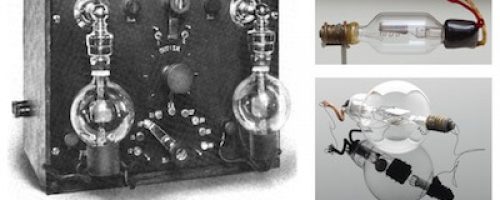
Edwin Howard Armstrong. Feedback, Superheterodyne and Frequency Modulation. Armstrong made a number of important contributions to radio development. In 1913 Armstrong discovered that employing positive feedback (also known as “regeneration”) led to much higher amplification allowing to go from use of headphones to loud speakers. He discovered that increasing feedback led to oscillations in the amplifier which could then be used as a continuous-wave radio transmitter.
Armstrong also developed the “superheterodyne circuit, which the sensitivity and selectivity of the radio receivers. He is known for his work on wideband frequency modulation (FM) the basis of todays FM radio stations, which eliminated static interference (stray noise) present in amplitude modulation. Earlier, following the analysis of AT&T’s Renshaw Carson of narrow band FM, it was thought that this approach was not viable. Armstrong later also worked on FM Doppler radar.
Miscellaneous Images.

REFERENCES.
- Charles Susskind, Observations of Electromagnetic-Wave Radiation before Hertz
ISIS, Vol. 55, No. 1 (Mar., 1964), pp. 32-42. https://www.jstor.org/stable/227753 - Brown, (1980). David Edward Hughes, F.R.S., 1831-1900. Notes and Records of the Royal Society of London,34(2), 227-239. Retrieved from http://www.jstor.org/stable/531809
- D. E. Hughes’ Research in Wireless Telegraphy, The Electrician, Volume 43, 1899, 5 May. Pp40-41; http://www.physics.princeton.edu/~trothman/electrician.pdf
- J. Fahie, 1901, A History of Wireless Telegraphy. Appendix D . p 305-316
- V. D. Wirjawan, D. A. Zollman, and E. Mau, 2015, Induction balance study for metal detection, AIP Conference Proceedings 1656, 040010; doi: 10.1063/1.4917117
- Heinrich Hertz, Electric Waves, McMillan and Co1893, republished Dover Publications NY 1962; http://n3ox.net/files/hertz_Electric_waves.pdf
- Bryant J.H. (1998) Heinrich Hertz’s Experiments and Experimental Apparatus: His Discovery of Radio Waves and His Delineation of Their Properties. In: Baird D., Hughes R.I.G., Nordmann A. (eds) Heinrich Hertz: Classical Physicist, Modern Philosopher. Boston Studies in the Philosophy of Science, vol 198. Springer, Dordrecht. DOIhttps://doi.org/10.1007/978-94-015-8855-3_4
- Bruce J. Hunt, The Alternative Path: Lodge, Lightning, and Electromagnetic Waves, Making Waves: Oliver Lodge and the Cultures of Science, 1875-1940
- Lodge, 1894, “The Work of Hertz and his Successors” , The Electrician Printing and Publishing Company, Ltd. in London
- Lodge, 1900 and 1908. Signalling Across Space Without Wires. Third and Fourth Edition
- J.Lodge, 1890, Electrical Radiation from Conducting Spheres, an Electric Eye, and a Suggestion regarding Vision, Nature 41, p. 462-63
- G.J. Aitken, Syntony and Spark – The Origins of Radio, J. Wiley, New York, 1976. ( Princeton University Press, 1985.ISBN-10: 0691023921)
- Hong. 2001, Wireless : from Marconi’s black-box to the audion, MIT Press, ISBN 0-262-08298-5
- History of Wireless , Arthur A. Oliner, Dipak L. Sengupta, M. Salazar-Palma, Robert Mailloux, and Tapan K. Sarkar, 2006 John Wiley & Sons, Inc. ISBN:9780471718147.
- Righi. 1894. Sulle oscillazioni elettriche a piccola lunghezza d’onda esul loro impiego nella produzione di fenomeni analoghi ai principali fenomeni dell’ottica : memoria del prof. Augusto Righi, letta alla R. Accademia delle Scienze dell’ Istiuto di Bologna nella sessione delli 27 maggio 1894. Bologna : tipografia Gamberini e Parmeggiani, 1894. ETH-Bibliothek Zürich, Rar 10343, http://doi.org/10.3931/e-rara-23870/ P.
- Darrel T. Emerson, 1997, The work of Jagadis Chandra Bose: 100 years of millimeter-wave research. IEEE Transactions on Microwave Theory and Techniques; Vol. 45, No. 12, pp. 2267-2273; 1997. 10.1109/22.643830
- C. Bose, On a self-recovering coherer and the study of the cohering action of different metals, Proc. R. Soc. Lond. 1900, 65, 166-172, published 1 January 1899
- K. Bondyopadhyay, “Sir J.C. Bose diode detector received Marconi’s first transatlantic wireless signal of December 1901 (the “Italian Navy Coherer” Scandal Revisited),” in Proceedings of the IEEE, vol. 86, no. 1, pp. 259-285, Jan. 1998. doi: 10.1109/5.658778
- Patrick Geddes, The Life and Work of Sir Jagadis C. Bose, 1920, Longmans, Green. https://archive.org/details/lifeandworksirj00geddgoog/page/n6
- Margaret Cheney, Tesla Man out of Time, Barnes & Nobles, NY. 1989. https://archive.org/details/TeslaManOutOfTime_374
- S.Popov in Protocol No 151 (201) of the Physical Section of the Russian Physical and Chemical Society in St Petersburg on 25 of April 1895//Russian Physical Chemical Society Journal,1895, Vol. 27, p.259
- S. Popov A.S. The Apparatus for Detecting and Recording Electrical Oscillations.// Russian, Physical Chemical Society, 1896, Vol. 28, No1, p.1-14
- Marconi, My father, Marconi, London : F. Muller, (USA: McGraw Hill), 1962. ISBN 1-55071-151-2
- W. Simmons, 1996, Guglielmo Marconi and Early Systems of Wireless Communication, GEC REview 11, 37.
- E. Gardiol. At the Dawn of the Wireless Era. Proceedings of APSYM 2010, Dec 12-14. Dept. of Electronics CUSAT, Cochin, India
- Michael Friedewald, The Beginnings of Radio Communication in Germany, 1897-1918, Journal of Radio Studies, Volume 7, 2000, no. 2, pp. 441-463.
- British Adoption of Radio Communication. http://www.dreadnoughtproject.org/tfs/index.php/British_Adoption_of_Radio_Communication

